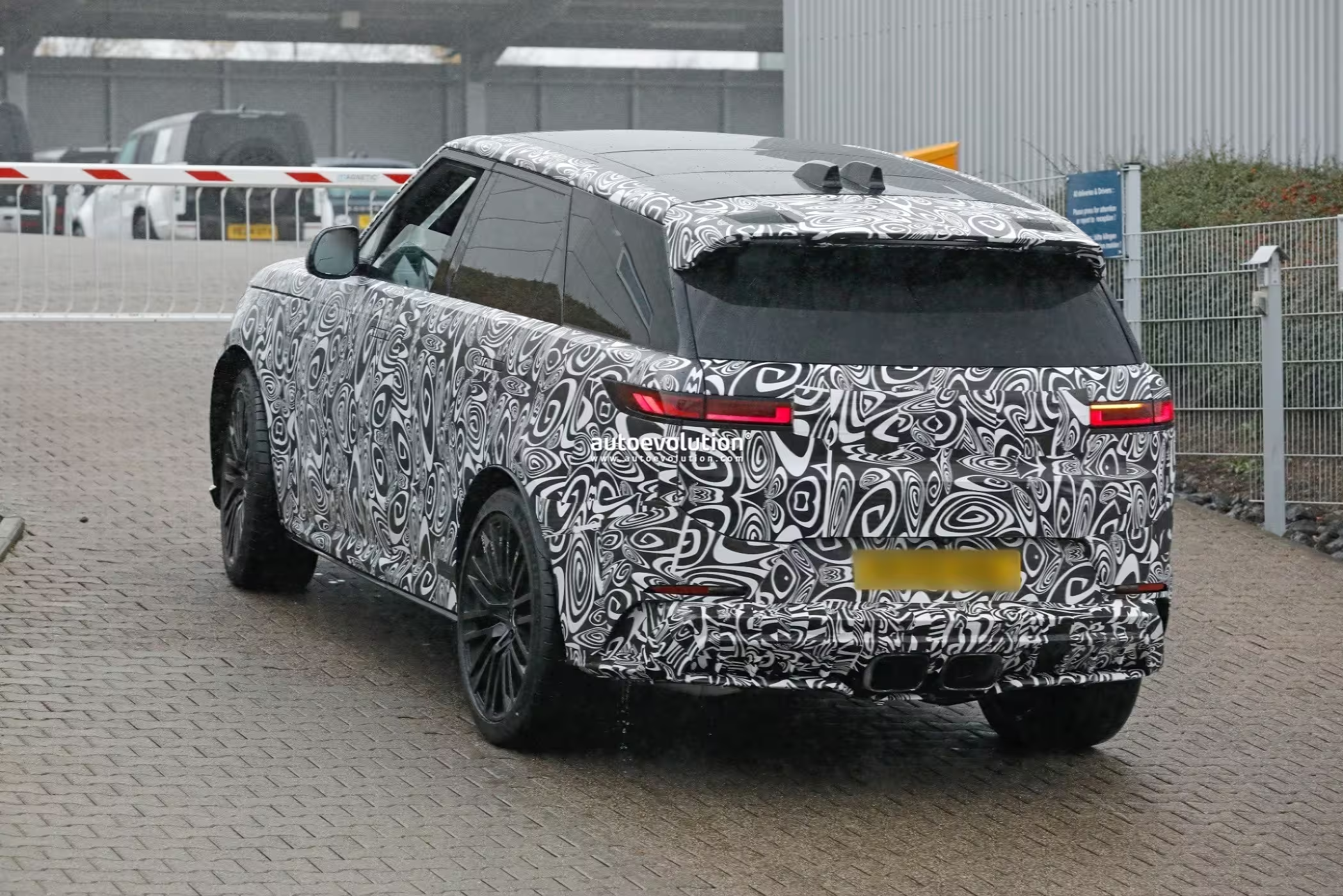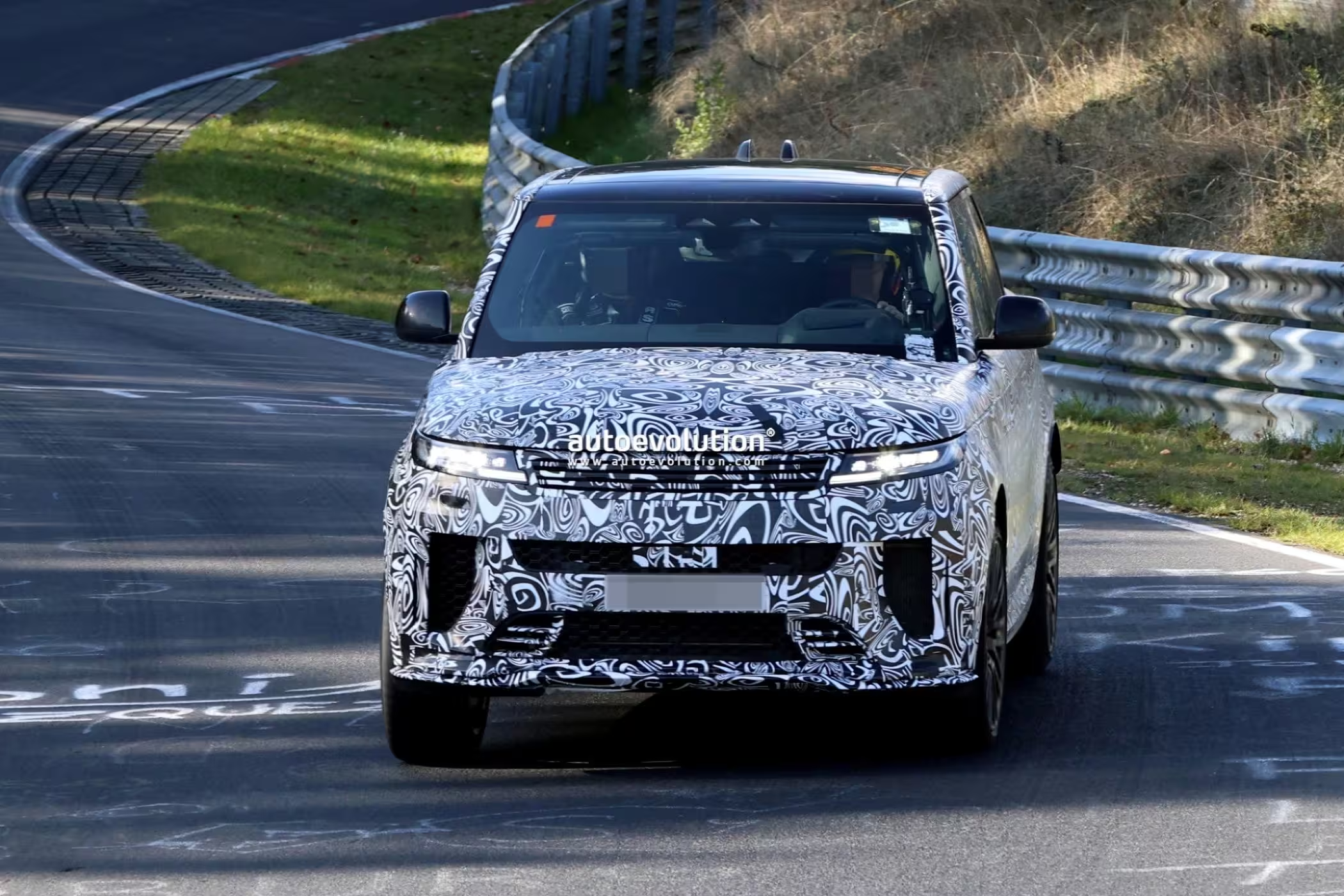5 Minutes
Spy shots show a bold Porsche-inspired exhaust and subtle updates
Range Rover's most extreme internal-combustion Sport is getting a spicy mid-cycle refresh. Caught testing in Germany, the 2027 Range Rover Sport SV facelift wears heavy camouflage but reveals a striking centrally mounted exhaust layout that immediately recalls the 2026 Porsche Cayenne Turbo GT. The prototype’s rear diffuser and bumper shapes are revised too, hinting at a sharper, more performance-focused rear end.

What the spy shots tell us
The test mule was fitted with a roll cage, big performance brakes, and Michelin summer tires — and it looked unusually flat and composed through fast corners on the Nürburgring. That combination suggests Jaguar Land Rover has tuned the Sport SV’s already advanced chassis even further, likely pairing the facelift with updated semi-active suspension.
Jaguar Land Rover’s current SV package relies on its 6D Dynamics system, which replaces conventional anti-roll bars with pitch control, hydraulically interlinked dampers, and height-adjustable air springs. Expect the facelift to retain and refine these technologies, delivering a lower stance under load and improved handling precision.
Performance hardware: what stays and what might change
There’s no high-voltage sticker on the prototype, which strongly indicates the facelift keeps the BMW-sourced 4.4-liter V8 at the heart of the SV. That S68-derived unit is rated at about 626 hp and 553 lb-ft (750 Nm) in current SV trim, with other BMW applications like the Alpina XB7 pushing the motor to 631 hp and up to 590 lb-ft (800 Nm).

A 48-volt mild-hybrid system remains part of the package, providing an extra boost (around 12 hp and roughly 148 lb-ft/200 Nm of assist) to smooth responses and aid efficiency. Jaguar Land Rover hasn’t swapped the V8 for an electrified powertrain here, but it’s likely some internal tuning and calibration will accompany the facelift.
Chassis and drivetrain highlights
- SV-tuned intelligent all-wheel drive
- All-wheel steering and torque vectoring
- Active locking rear differential tuned by SV
- Fastest steering ratio ever fitted to a Range Rover Sport
- Unique rear subframe with revised geometry and new suspension links
These elements combine to give the SV world-class handling credentials while keeping Range Rover Sport usability.

Design, cockpit and practical questions
Although the spy vehicle still carried pre-facelift headlights and taillights, minor lighting updates are expected for the production facelift. Inside, an updated cockpit — particularly around infotainment and connectivity — is likely, aligning the SV with current luxury tech trends.
One curious detail is the central exhaust’s location: it raises the practical question of whether a tow hitch option will still be available. The outgoing SV lists a towing capacity of 3,500 pounds (1,588 kg), so buyers who need towing capability will watch closely to see if the new exhaust packaging affects that ability.
Market positioning and outlook
The Range Rover Sport SV occupies a niche where luxury, brute-force performance, and off-road capability meet. The 2027 facelift appears focused on sharpening handling and visual drama rather than reworking the core powertrain architecture.
Regulatory updates are also in play: Jaguar Land Rover is preparing Euro 7-focused updates for its six-cylinder Ingenium engines and the gasoline inline-six, while the US market will continue to receive the gasoline V8 variants. If JLR follows BMW’s lead, hybridized and electrified options will remain important across the lineup, even if the SV itself stays predominantly V8-driven.

"This refresh looks like a careful evolution: more curve-focused aero, sharper chassis tuning, and design cues that underline the SV's track intentions," says an industry engineer familiar with high-performance SUVs.
In short, the 2027 Range Rover Sport SV facelift promises incremental but meaningful upgrades — a bolder rear end, refined suspension and steering, and continued V8 performance — keeping the SV at the top of luxury SUV performance contenders.
Source: autoevolution
Comments
mechbyte
is the V8 really staying for 2027? sounds optimistic. central exhaust, will that kill the hitch option or can they reroute it? curious abt heat & packaging
v8rider
Wow that central exhaust looks insane, Porsche vibes for sure! If they keep towing cap tho... kinda worried, hope they didn't sacrifice practicality 😬


Leave a Comment